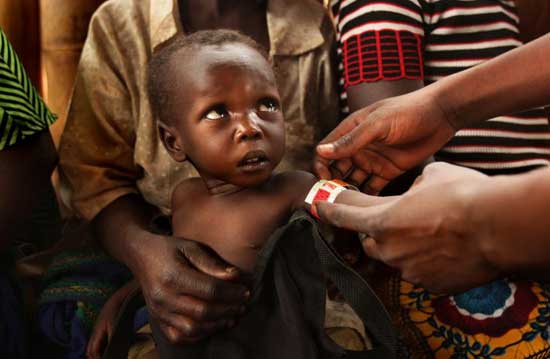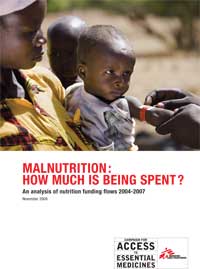
Democratic Republic of Congo 2009 © Kate Geraghty
Malnutrition is one of the biggest contributors to child mortality. Here, an MSF worker screens a Congolese child for malnutrition with a MUAC, a tool that measures his middle-upper arm circumference.
Malnutrition is an urgent humanitarian emergency that contributes to the deaths of 3.5 to 5 million children under five each year. Millions more are left vulnerable to illnesses or suffering from physical or mental disabilities due to malnutrition. This in turn contributes to impediments to education and development in affected countries.
Despite the fact that malnutrition has regained the world’s attention in recent years, especially in light of the 2007-2008 surge in food prices, international donor funding falls drastically short of the enormous needs. The World Bank estimates that $12.5 billion is needed yearly from the international donor community to effectively address malnutrition. A new report by Doctors Without Borders/Médecins Sans Frontières (MSF), released in advance of the 2009 World Food Summit, reveals that the current funding for the years 2004-2007 averaged $350 million annually—30 times less than the amount need to fight malnutrition.
MSF's report "Malnutrition: How Much is Being Spent?" documents that international donor funding flows have remained flat and insufficient since 2000 and makes a plea to donors, recipient countries, and international organizations to increase their commitments considerably. In addition, the report shows only 1.7 percent of emergency food aid actually addresses nutritional needs. MSF recommends that interventions target nutrition if the scourge of malnutrition is to be reduced.





